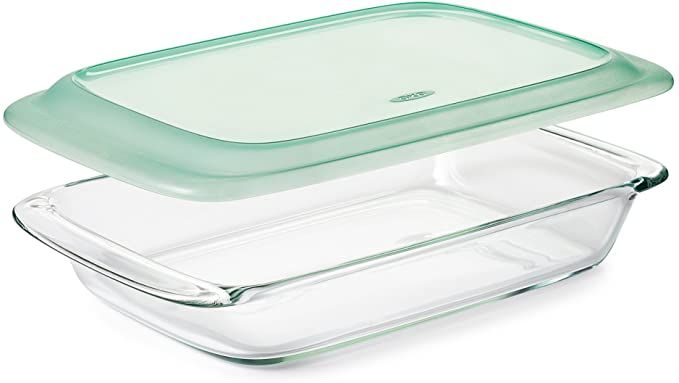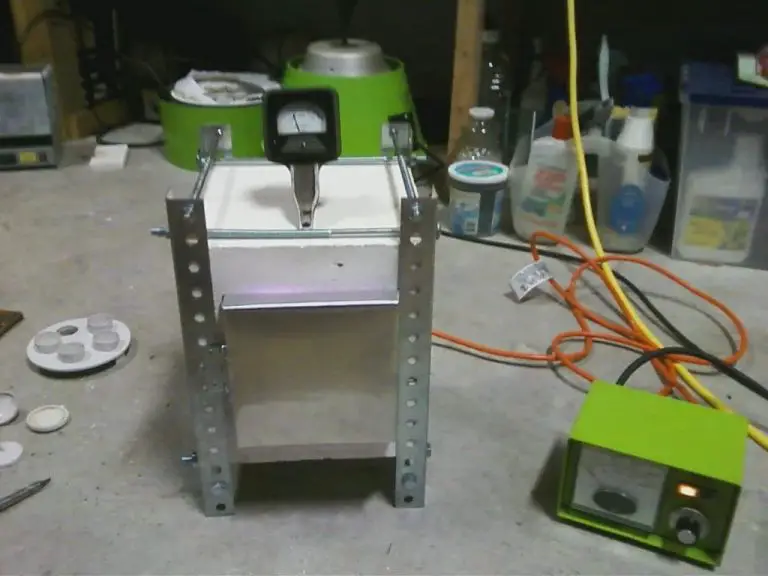What Is The Symbol For An Oven Safe Pan?
Oven safe pans are an important part of any well-stocked kitchen. Being able to identify which pans are oven safe is key to avoiding potential safety hazards and damage to cookware. Oven safe pans are designed to withstand the high temperatures of an oven without warping, cracking, or releasing toxic chemicals. Using a pan that is not oven safe can result in the pan melting, potentially damaging the oven, causing smoke and chemical fumes, and ruining food in the process.
Knowing how to identify oven safe pans allows you to safely use your cookware for a wider variety of cooking methods. Oven safe pans broaden your cooking capabilities, enabling you to start dishes on the stove top and finish in the oven for everything from baked casseroles to roasted vegetables. This guide will cover what the oven safe symbol looks like and how to know if your pans can safely go in the oven.
Oven Safe Symbol
The oven safe symbol is a pictorial representation that indicates cookware is suitable for use in the oven. The most common depiction resembles a small oven or oven rack, signifying the pan or dish can safely withstand high oven temperatures (Oven Safe Symbol: Guide To Meaning, Looks, And How To Read). Other variations may show a dish going into an oven.
The oven safe symbol gives consumers a quick visual indicator that cookware has been designed and tested for baking, roasting, broiling, etc. Its presence means the item will not crack, warp, or fail when exposed to oven heat. The symbol provides assurance the cookware can be transferred seamlessly from stovetop to oven without issue. Some pans may specify an oven-safe temperature or recommend certain oven functions.
When shopping for pots, pans, casserole dishes and more, look for the oven safe symbol before purchase. Its presence indicates versatility and flexibility in cooking methods. With oven-safe cookware, a single piece can be used for multiple steps of a recipe without worry.
Materials
There are several common materials that are considered oven safe and can withstand high baking temperatures:
Cast Iron – Cast iron skillets and pans are extremely durable and oven safe at even very high temperatures. The iron evenly distributes heat and can develop a natural non-stick surface over time. Cast iron can usually handle oven temperatures up to 500°F.
Ceramic – Ceramic bakeware is a popular choice for casserole dishes and pie plates. It withstands temperatures up to 428°F. Unglazed ceramic can go higher to avoid cracking or crazing.
Glass – Tempered glass like Pyrex can handle oven temperatures up to 500°F. It allows you to see the food cooking and is non-reactive.

Enameled Cast Iron – Enameled cast iron combines the heat retention of cast iron with an enamel coating that prevents rusting and allows more colorful options. It’s oven safe up to 500°F.
Stainless Steel – Stainless steel cookware is durable, non-reactive, and conductive. It can withstand oven temperatures ranging from 500-550°F depending on the quality.
Testing Pans
There are a few simple ways to test if a pan is oven safe before using it in the oven:
Check the manufacturer’s instructions – Most pans will indicate on the packaging or tag if they are oven safe and up to what temperature. Follow the manufacturer’s directions for oven safety.
Look at the materials – Pans made entirely from oven-safe materials like cast iron, stainless steel, ceramic, glass, and enameled cast iron can generally go in the oven. Avoid any plastic handles or rubber grips.
Do a stovetop test – Heat the empty pan on the stovetop at a medium-high temperature for a few minutes. If the handle gets hot and there are no signs of damage, it is likely oven-safe. Let it fully cool before handling.
Try a mini oven test – Place the empty pan in a preheated 200°F oven for 10 minutes. Check for any issues with the pan. Slowly increase the heat in increments to test higher temps.
Consult the manufacturer – If still unsure, contact the manufacturer directly to ask if the pan is oven safe and to what temperature. They will have the definitive answer.
Testing pans before putting them in the oven prevents potential damage and safety issues. Following the manufacturer’s instructions is always the best way to know if a pan can safely go from stovetop to oven.
Using Oven Safe Pans
When using oven safe pans in the oven, be sure to follow these tips:
- Preheat the oven fully before placing the pan inside. This prevents thermal shocking the pan.
- Use potholders when putting the hot pan into the oven or removing it. The handles will be extremely hot.
- Don’t place a hot pan directly on a cold surface when removing it from the oven. Allow it to cool on the stovetop first to prevent warping or cracking.
- Avoid drastic temperature changes like putting a hot pan under cold water. Let it cool gradually.
- Don’t exceed the pan’s maximum oven safe temperature. This varies by material but is often 350-500°F.
- Allow at least 2 inches of space around the pan for proper air circulation.
When heating oven safe pans, the metal evenly distributes heat for superior cooking performance. However, the handles can get especially hot. Let the pan cool completely before touching bare handles after baking or broiling. Place hot pans on a trivet or cooling rack, not directly on the counter. Avoid quenching hot pans in water as this can damage the pan.
Always allow oven safe pans to gradually come to room temperature before washing. Avoid cold water shocks while the pan is still hot. Gentle, low heat on the stovetop can help an oven safe pan adjust to ambient temperatures before cleaning.
Caring for Oven Safe Pans
Oven safe pans need to be cleaned properly in order to maintain their performance and extend their lifespan. Here are some tips for cleaning oven safe pans:
Baking soda paste – Make a paste with 3 parts baking soda to 1 part water. Spread the paste on the dirty pan and let sit for at least 15 minutes before scrubbing and rinsing. Baking soda is a gentle abrasive that will help lift baked-on grease and food residue (source).
Vinegar soak – Fill the pan with enough vinegar to cover the bottom and let soak for 30 minutes. The acid in the vinegar will help break down grease and residue. Scrub and rinse thoroughly after soaking.
Steel wool scrub – For stubborn baked-on stains, gently scrub the pan with steel wool. Avoid scrubbing too hard as this can damage the pan’s surface.
Oven self-cleaning cycle – Place the pan inside the oven during the high-heat self-cleaning cycle to burn off any residue. This works best for very dirty pans.
Handwash only – Oven safe pans should always be handwashed, never put in the dishwasher which can damage the pan’s finish over time.
Signs of Damage
When using oven safe pans regularly, it’s important to periodically inspect them for any signs of damage. There are a few key things to look for:
Warping or deforming of the pan – This can happen when a pan is exposed to high heat over time, causing it to warp or change shape. The bottom of the pan may spin or wobble on the stovetop if it develops a warp.
Cracking or chipping – Inspect the surface of the pan for any small cracks or chips, especially around the edges and handles. Cracks can lead to further damage over time.
Discoloration – Patches of discoloration, especially if the original finish appears damaged or worn away, could indicate a problem. However, some discoloration from use is normal.
Rubber cracking or peeling – If the handle has rubber components, check for any cracks, peeling, or deterioration. The rubber can degrade over time with heat exposure.
Rust spots – Small rust spots may appear on a damaged non-stick surface or around any chips and cracks. Rust indicates the underlying metal is exposed.
If you notice any of these warning signs, it’s best to replace the oven safe pan. Continuing to use a damaged pan can impact heating performance and may not be safe. Periodically inspecting pans helps catch problems before they worsen.
When to Replace
Oven safe pans typically need to be replaced every 5-10 years with regular use, though this can vary depending on the frequency and intensity of use according to Southern Living [1]. There are several signs that indicate it is time to replace an oven safe pan:
- The non-stick coating is flaking, peeling, or worn away, exposing the base metal
- The handles are loose or broken, making the pan unsafe to use
- There are visible cracks, warps, or dents in the pan
- The pan is discolored or stained despite cleaning attempts
- Food is burning or sticking when cooking, indicating loss of non-stick ability
- The pan bottom is uneven, causing instability on the stove or in the oven
If any of these signs are present, it’s best to retire the oven safe pan and replace it with new cookware for optimal safety and performance. Look for high-quality materials like stainless steel or ceramic coated aluminum that will hold up well over time.
Safety Tips for Using Oven Safe Pans
When cooking with oven safe pans, it’s important to follow some basic safety precautions. Here are some tips to keep in mind:
Always check the manufacturer’s instructions for the maximum oven safe temperature for your specific pan. Exceeding this temperature can damage the pan and possibly release toxic fumes (1).
Avoid putting pans with plastic, wood, or silicone handles in the oven, as these materials can melt or burn above certain temperatures. Use potholders or oven mitts when inserting or removing hot pans from the oven (1).
Don’t put empty pans in a hot oven, as this can damage the pan. Always add oil, food, or liquid before heating (2).
Don’t add cold liquids like water to a hot pan, as this can warp or crack the pan. Allow the pan to cool first (3).
Use the oven’s timer and avoid forgetting pans in a hot oven, which can lead to burning or smoke inhalation. Handle hot pans carefully when removing them (2).
Turn pot handles away from the front of the stove to avoid accidental spills. Use the back burners when possible (3).
Inspect oven safe pans regularly for damage like warping, cracks, peeling surfaces, etc. Damaged pans should be replaced (1).
Sources:
(1) https://www.bhg.com/recipes/tools/oven-safe-skillet/
(2) https://madeincookware.com/blogs/oven-safe-pans
(3) https://www.allrecipes.com/article/is-my-cookware-really-oven-safe/
Summary
In summary, the key points to remember about the oven safe symbol and using oven safe cookware are:
- The oven safe symbol is a small square icon with a solid or hollow circle inside, indicating the pan can safely go in the oven up to a certain temperature.
- Oven safe pans are made from materials like stainless steel, cast iron, ceramic, glass, and anodized aluminum that can withstand oven heat.
- Manufacturers test oven safe pans to ensure they meet safety standards for high heat cooking.
- When using oven safe pans, refer to the manufacturer’s recommended oven temperature limit.
- Avoid sudden temperature changes which can damage the pan. Allow pans to cool before washing.
- Inspect oven safe pans regularly for cracks, warping, changes in nonstick coating which are signs they should be replaced.
- Use potholders when handling hot pans. Keep handles away from burners. Follow other kitchen safety tips.
Understanding the oven safe symbol and how to properly use oven safe cookware allows you to safely expand your cooking techniques.

